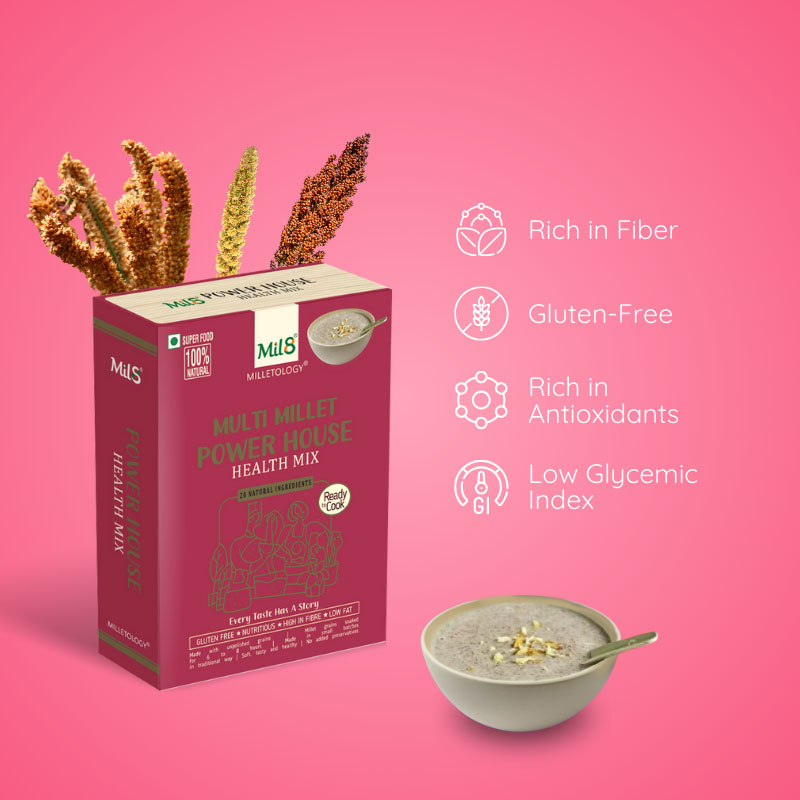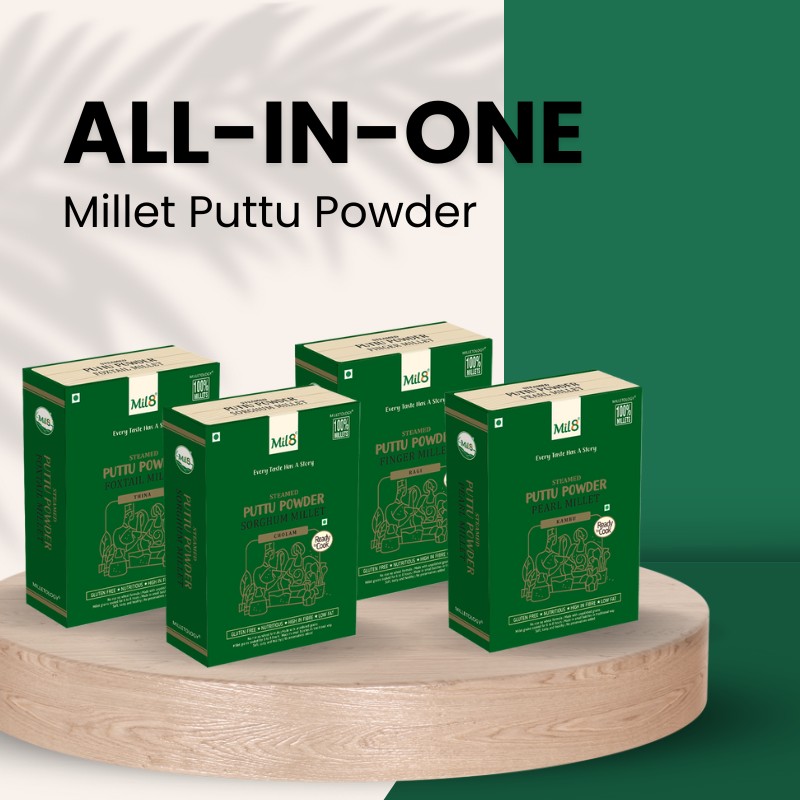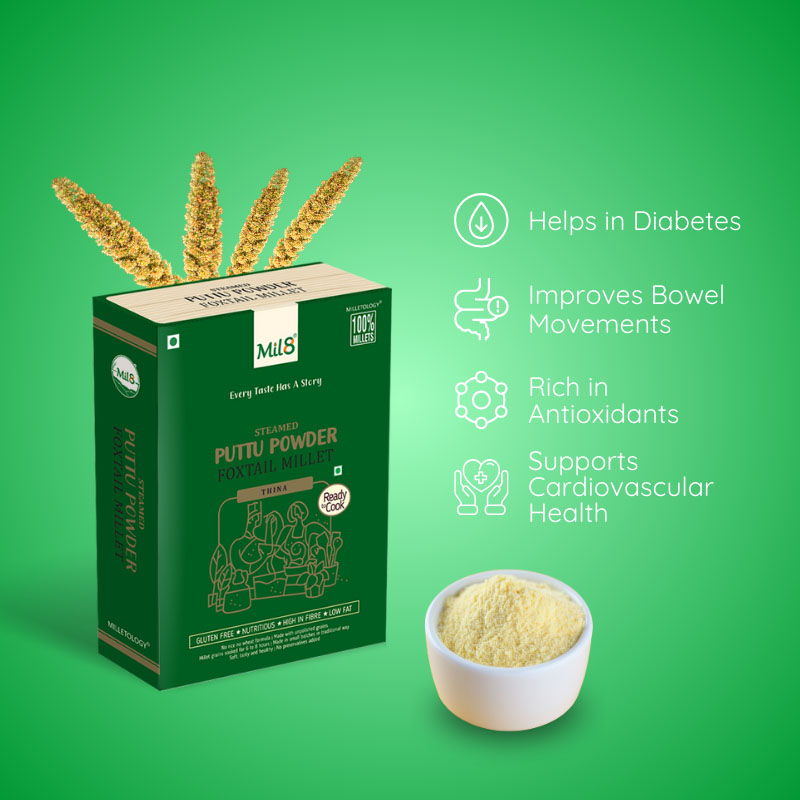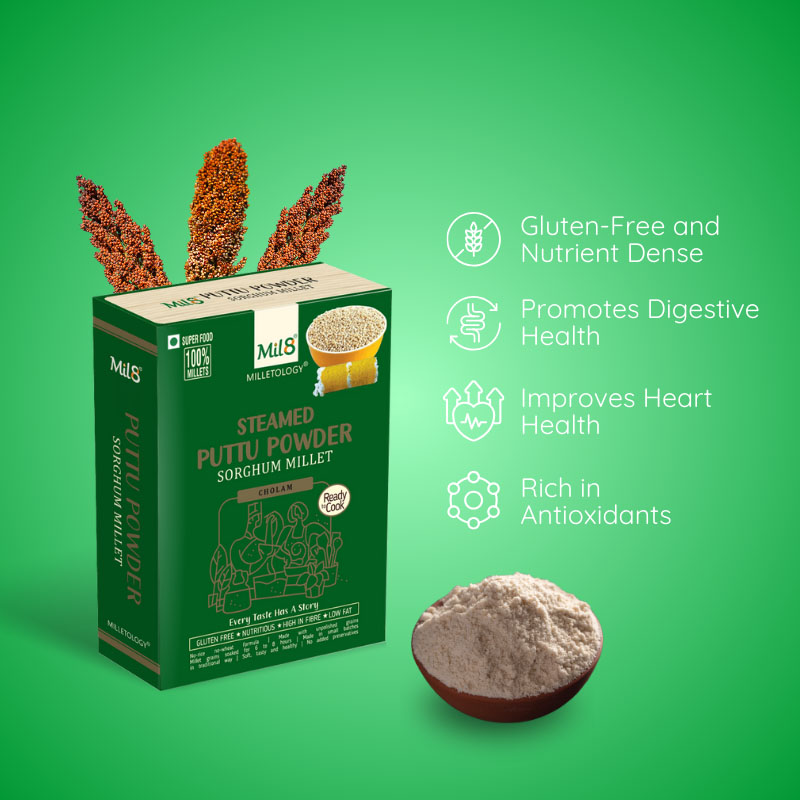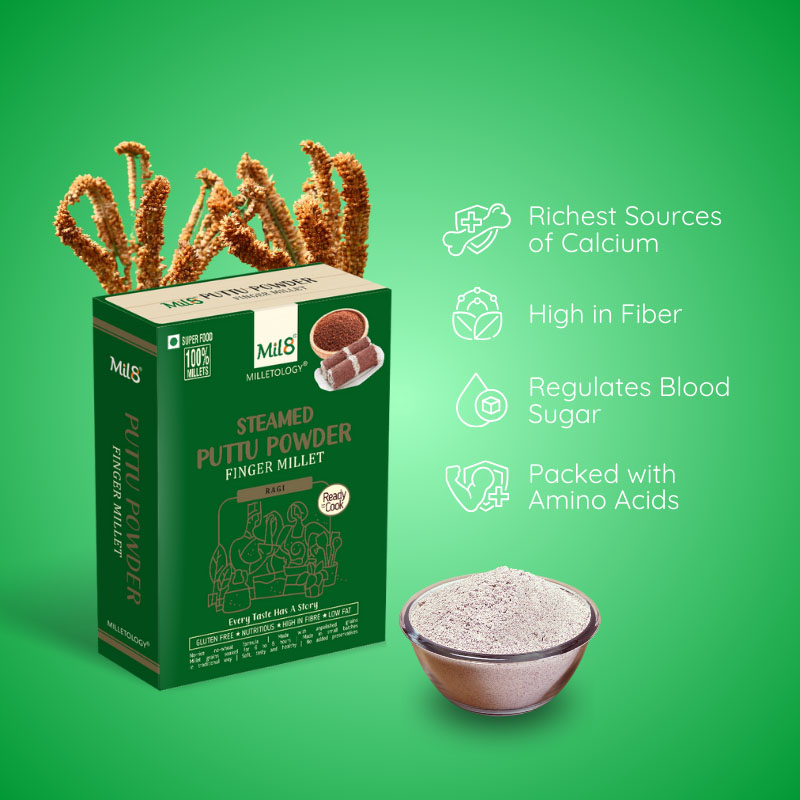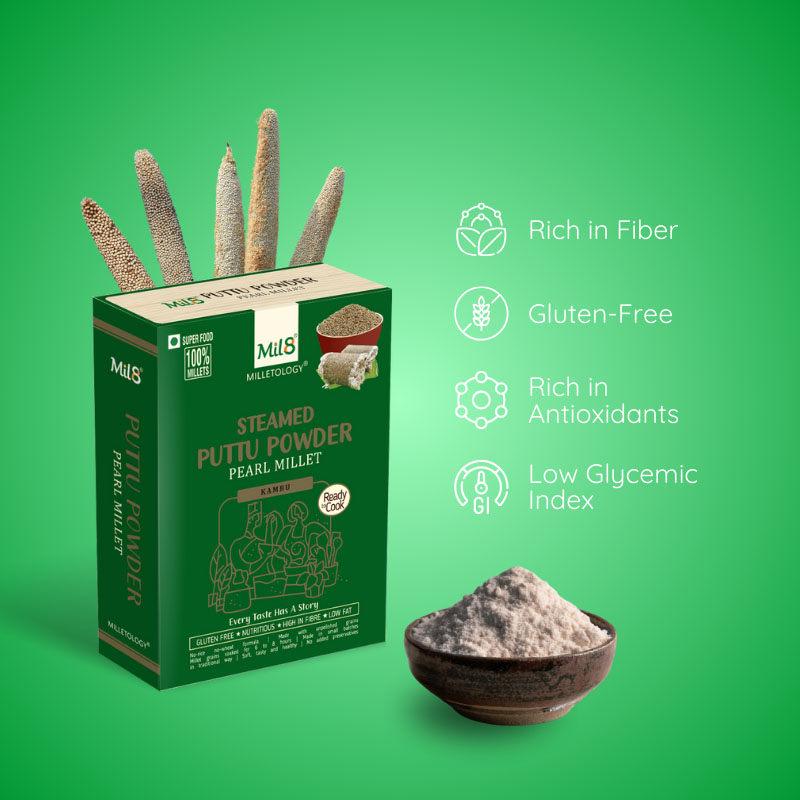Pearl Millet | Kambu
Pearl millet, scientifically known as Pennisetum glaucum, is a cereal grain crop that belongs to the grass family Poaceae. It is also known by various other names such as bajra in Hindi, bulrush millet, and African millet. This crop is primarily grown in arid and semi-arid regions of Africa and Asia.
Pearl millet is valued for its resilience to drought and its ability to grow in poor soil conditions, making it an important staple food in regions with challenging agricultural conditions. It is a versatile grain used for human consumption, livestock feed, and even forage. In some regions, it is ground into flour and used to make flatbreads, porridge, and other traditional dishes.
Nutritionally, pearl millet is rich in carbohydrates, fiber, protein, and several essential nutrients including iron, magnesium, phosphorus, and potassium. Its gluten-free nature makes it suitable for individuals with gluten intolerance or celiac disease. Additionally, pearl millet is gaining attention for its potential health benefits, including its role in managing diabetes and supporting heart health.
Bajra Roti (Pearl Millet Flatbread)
Instructions:
-
Prepare the Dough:
- Place the pearl millet flour in a mixing bowl.
- Gradually add warm water while mixing with your hands or a spoon until a soft dough forms. The amount of water needed may vary, so add it slowly until you achieve the right consistency.
- If desired, add a pinch of salt to the dough for flavor. This step is optional.
-
Knead the Dough:
- Once the dough comes together, knead it for a few minutes until it becomes smooth and pliable. This helps develop the gluten and ensures a softer texture for the roti.
-
Divide and Shape:
- Divide the dough into small portions, roughly the size of a golf ball.
- Take one portion of dough and roll it into a smooth ball between your palms.
- Flatten the ball slightly with your hands to create a small disc.
-
Rolling the Roti:
- Lightly flour a rolling surface and rolling pin.
- Place the dough disc on the floured surface and roll it out into a thin, round roti. Aim for a thickness similar to a tortilla or slightly thicker.
-
Cooking the Roti:
- Heat a tawa (flat griddle) or non-stick skillet over medium-high heat.
- Once hot, carefully transfer the rolled-out roti onto the hot tawa.
- Cook for about 1-2 minutes on one side until small bubbles start to form.
- Flip the roti and cook for another 1-2 minutes on the other side until it puffs up slightly and develops golden brown spots.
-
Serve:
- Remove the cooked roti from the tawa and place it on a plate.
- Optionally, brush the roti with ghee or butter for added flavor.
- Serve hot with your favorite curry, dal (lentil soup), or any other side dish of your choice.
Ingredients:
- 1 cup pearl millet flour (bajra flour)
- Warm water, as needed
- Salt, to taste (optional)
- Calories: 378 kcal
- Carbohydrates: 72.85 grams
- Protein: 11.02 grams
- Fat: 4.27 grams
- Fiber: 8.5 grams
- Vitamins:
- Vitamin A: 16 IU
- Vitamin B1 (Thiamine): 0.383 mg
- Vitamin B2 (Riboflavin): 0.292 mg
- Vitamin B3 (Niacin): 4.724 mg
- Vitamin B6: 0.378 mg
- Vitamin B9 (Folate): 85 μg
- Vitamin E: 0.74 mg
- Minerals:
- Calcium: 38 mg
- Iron: 4.72 mg
- Magnesium: 285 mg
- Phosphorus: 285 mg
- Potassium: 292 mg
- Sodium: 5 mg
- Zinc: 1.67 mg
- Other Nutrients:
- Water: 8.67 grams
- Ash: 1.92 grams
- Cholesterol: 0 mg
-
Flatbreads and Rotis: Pearl millet flour can be used to make traditional flatbreads like bajra roti in India. The flour is mixed with water to form a dough, which is then rolled out and cooked on a hot griddle or skillet. These flatbreads can be served with curries, dal (lentil soup), or any other side dish.
-
Porridge: Pearl millet can be cooked into a creamy porridge by boiling the grains with water or milk. This porridge can be flavored with spices like cinnamon, cardamom, or nutmeg, and sweetened with sugar or honey. It makes for a nutritious and comforting breakfast or snack.
-
Pilafs and Grain Salads: Cooked pearl millet grains can be used as a base for pilafs or grain salads. Simply cook the millet in water or broth until tender, then mix it with vegetables, herbs, nuts, and/or dried fruits for a flavorful and nutritious dish.
-
Soup Thickener: Pearl millet flour can be used as a natural thickener for soups and stews. Simply whisk the flour into the broth until smooth and simmer until thickened. This adds a nutty flavor and boosts the nutritional content of the soup.
-
Baking: Pearl millet flour can be incorporated into baked goods like bread, muffins, pancakes, and cookies. It adds a unique flavor and texture to baked goods while increasing their nutritional value. It can be used alone or mixed with other flours like wheat flour or gluten-free flour blends.
-
Livestock Feed: In agricultural settings, pearl millet is commonly used as fodder for livestock such as cattle, sheep, and goats. It provides a nutritious feed option, especially in regions where other forage crops may not thrive.


